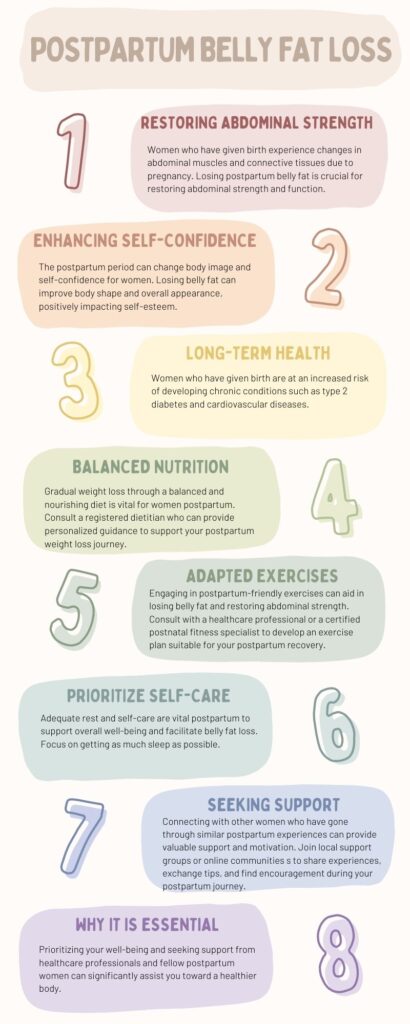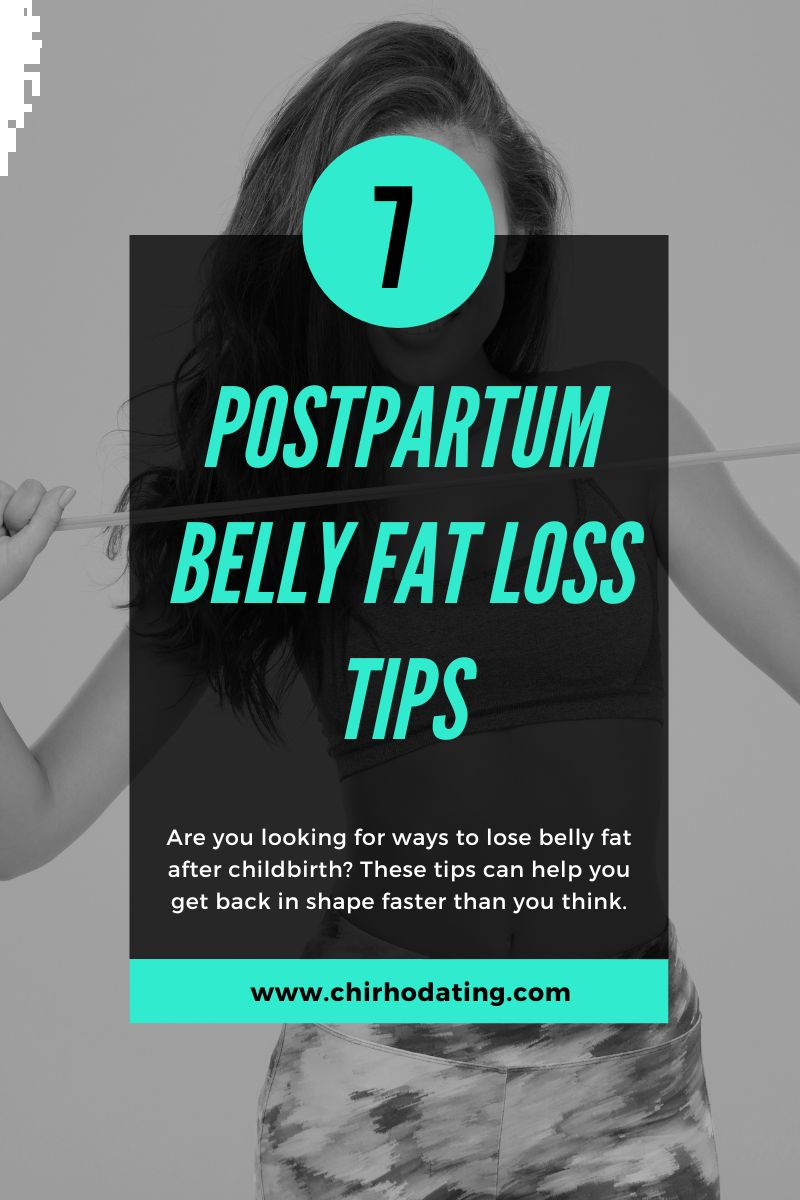We are a professional review company that receives compensation from companies whose products we review. We test each product thoroughly and give high marks only to the ones that are the very best. We are independently owned, and the opinions expressed here are our own.
For women who have given birth to children, losing postpartum belly fat is a common concern in their journey toward reclaiming their pre-pregnancy bodies.
Beyond the desire for aesthetic changes, it is essential to recognize that reducing belly fat holds significant health benefits and supports overall well-being.
This article will explore practical strategies explicitly tailored for women recently giving birth, providing scientific evidence to support their effectiveness. Let’s explore the science-backed methods to help you lose postpartum belly fat and achieve a healthier body.
If you want to watch a video about how one woman lost her belly fat after childbirth, click or tap the video below.

The Importance of Postpartum Belly Fat Loss for Women
a. Restoring Abdominal Strength and Function
Women who have given birth experience changes in abdominal muscles and connective tissues due to pregnancy. Losing postpartum belly fat is crucial for restoring abdominal strength and function.
Research published in the Journal of Women’s Health indicated that targeted exercises and overall weight loss contribute to improved core muscle strength and reduced diastasis recti, where the abdominal muscles separate [1].
Restoring abdominal integrity can alleviate discomfort and enhance overall physical well-being.

b. Enhancing Self-confidence and Body Image
The postpartum period can change body image and self-confidence for women. Losing belly fat can improve body shape and overall appearance, positively impacting self-esteem.
A study published in BMC Pregnancy and Childbirth found that postpartum women who lost belly fat reported enhanced body image satisfaction and improved self-confidence [2]. These positive changes can enhance overall well-being and foster a more positive self-perception.

c. Promoting Long-term Health
Women who have given birth are at an increased risk of developing chronic conditions such as type 2 diabetes and cardiovascular diseases.
Excessive postpartum belly fat has been associated with an elevated risk of these health concerns.
Scientific research published in Obstetrics & Gynecology demonstrated that weight loss interventions, including targeted exercise and healthy eating habits, effectively reduce postpartum belly fat and improve metabolic health markers [3].
You can mitigate these risks and promote long-term health by prioritizing belly fat loss.

Effective Strategies for Postpartum Belly Fat Loss
a. Gradual Weight Loss and Balanced Nutrition
Gradual weight loss through a balanced and nourishing diet is vital for women postpartum.
Focus on consuming nutrient-dense foods, including lean proteins, whole grains, fruits, and vegetables. Avoid crash diets or overly restrictive eating patterns, as they may compromise your energy levels and milk supply if breastfeeding.
Consult a registered dietitian who can provide personalized guidance to support your postpartum weight loss journey.

b. Incorporating Postpartum-Friendly Exercises
Engaging in postpartum-friendly exercises can aid in losing belly fat and restoring abdominal strength.
Consult with a healthcare professional or a certified postnatal fitness specialist to develop an exercise plan suitable for your postpartum recovery.
Exercises such as pelvic tilts, gentle abdominal and core exercises, low-impact cardio, and strength training can help tone the abdominal muscles while considering the specific needs and healing process after childbirth.

c. Prioritizing Rest and Self-care
Adequate rest and self-care are vital postpartum to support overall well-being and facilitate belly fat loss.
Focus on getting enough sleep, managing stress levels, and practicing self-care activities that promote relaxation and rejuvenation. Prioritizing self-care helps maintain emotional balance, positively influencing weight loss efforts and overall health.

d. Seeking Support and Community
Connecting with other women who have gone through similar postpartum experiences can provide valuable support and motivation. Joining local support groups or online communities can offer opportunities to share experiences, exchange tips, and find encouragement during your postpartum belly fat loss journey.
Engaging in activities that promote social connection can enhance overall well-being and provide a sense of belonging.

Why Losing Belly Fat After Child Birth Is Essential
For native women who have given birth, losing postpartum belly fat is not only about achieving physical changes but also about restoring abdominal strength, enhancing self-confidence, and promoting long-term health.
Scientific evidence supports the effectiveness of targeted exercises, gradual weight loss, balanced nutrition, rest, and self-care in achieving postpartum belly fat loss.
Prioritizing your well-being and seeking support from healthcare professionals and fellow postpartum women can significantly assist you toward a healthier body.

Remember, the postpartum period is unique to each individual, and it is essential to listen to your body’s needs and pace yourself accordingly. Embrace self-love, patience, and a positive mindset as you navigate the postpartum belly fat loss journey, allowing yourself to enjoy the experience of reclaiming your vitality and well-being.

References
- Sperstad, J. B., Tennfjord, M. K., Hilde, G., Ellström-Engh, M., & Bø, K. (2016). Diastasis recti abdominis during pregnancy and 12 months after childbirth: prevalence, risk factors and report of lumbopelvic pain. British Journal of Sports Medicine, 50(17), 1092-1096.
- Gallagher, H. L., Rayment, R., & West, A. (2017). The experience of successful postpartum weight loss and weight loss maintenance: a systematic review of qualitative evidence. BMC Pregnancy and Childbirth, 17(1), 1-13.
- Artal, R., Lockwood, C., Brown, H. L., Rosenn, B., & Guzick, D. S. (1997). Weight loss recommendations revisited in the 1990s. Obstetrics & Gynecology, 90(6), 993-996.
- Please note that access to full articles may require a subscription or purchase.





What do you think about the article you've just read? Please tell me below.